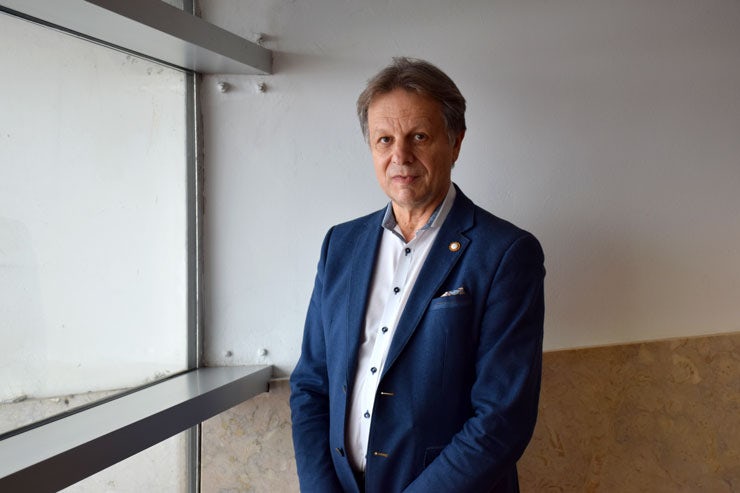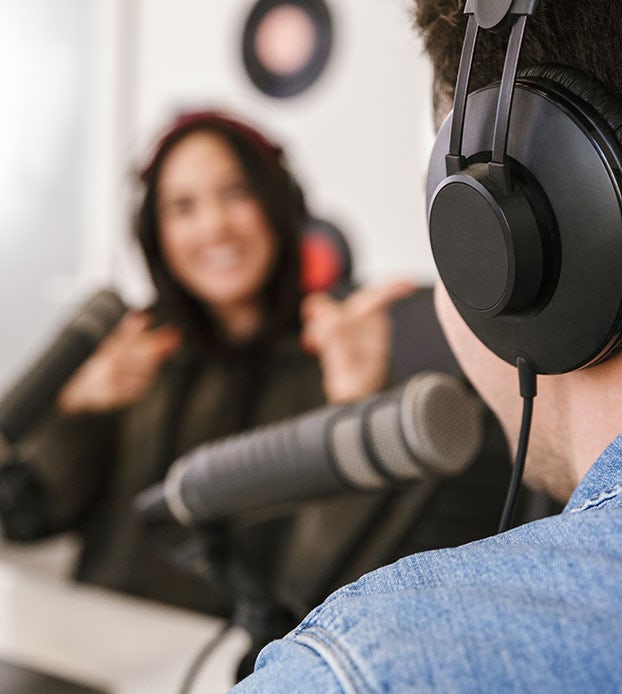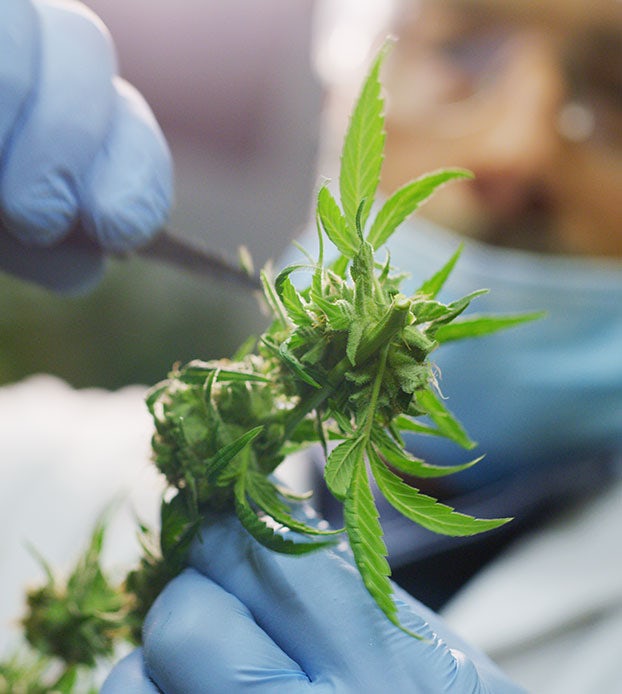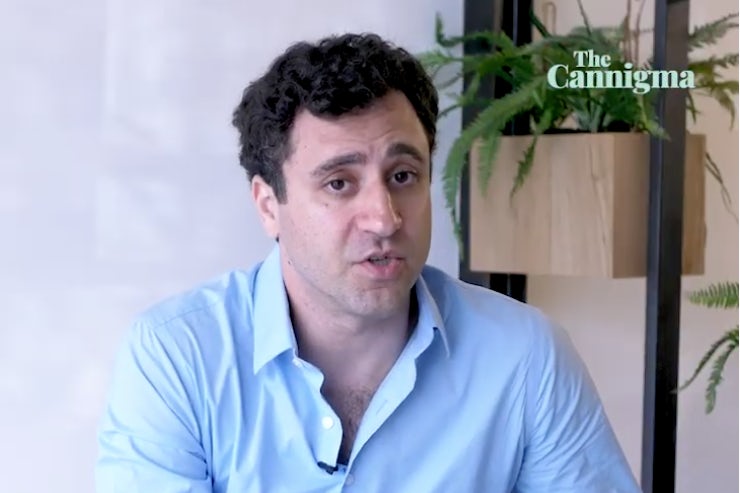When Dr. Vincent Maida first starting recommending medical cannabis to cancer patients over two decades ago, he was viewed as an outcast by many of his colleagues in the medical community.
“There was zero [cannabis] curricula when I went to medical school,” Dr. Maida told The Cannabis Enigma Podcast. “And of course, the way medical students are socialized — it’s to think in a certain way, and if you try to think outside of those parameters, you’re deemed a bit of a heretic.”
Fast forward a few years, and Dr. Maida, today an associate professor at the University of Toronto, started to wonder whether cannabis could help solve a problem most of his palliative patients were suffering from: intractable and chronic wounds.
Listen, subscribe on: Apple Podcasts | Spotify | Google Play
As many as 6% of the world population suffers from chronic wounds of one type of another.
His company, VinSan Therapeutics, is developing a cannabis-based treatment for those wounds, for which modern medicine doesn’t have a cure.
“My findings and the results in my Phase I trial have been nothing short of dramatic. I’ve seen elderly dying patients completely heal wounds,” Dr. Maida said. “People with big gaps in their body regenerate tissues.”
Edited by Michael Schaeffer Omer-Man. Produced by Michael Schaeffer Omer-Man, Elana Goldberg, and Matan Weil.

Full Transcript:
Michael Schaeffer Omer-Man Dr. Vincent Maida, thanks for being with us.
Dr. Vincent Maida: My pleasure and my honor.
Michael: So we’re here at the CannX Medical Cannabis Conference in Portugal. I listened to your presentation yesterday about the work that you’re doing, and we’ll get to that in just a second, but first I want to ask you: how did you start using cannabis in your medical practice?
Dr. Maida: I have over two and a half decades of experience using cannabis and cannabinoids in my patients over my 37-year career as a physician, and it started by listening to the narratives of the thousands of patients that I’ve had over my career. And over and over, hearing the stories of my patients using typical guideline drugs and treatments for their various conditions and not having complete or adequate response of their issues and their symptoms, and yet when they added cannabis or cannabinoids to their existing guideline drugs, they suddenly began to experience more positive results.
And when one hears those narratives time and time again, day in and day out, one starts to wonder, and it’s basically based on hearing those narratives from my patients that these compounds are useful and beneficial and relatively, you know, carefree in terms of side effects, that made me become a believer and promoted me to, and allowed me and stimulated me to want to go into the literature and learn more about the endocannabinoid system. It’s something that I’ve been following for many years. In fact, I’m into my third decade of doing so.
Michael: It’s something we hear a lot, especially from doctors, that their introduction to medical cannabis, cannabinoids and the endocannabinoid system comes from the patients. It wasn’t and still isn’t being taught in a lot of medical schools. Was that a challenge, cognitively to push back against the training you had received?
Dr. Maida: Absolutely, or lack of training, that is. In fact, when I went to medical school, there was zero mention about the endocannabinoid system, even though things were starting to evolve, I believe Professor Mechoulam already published some early data, and even then there was zero curricula when I went to medical school. And of course, the way medical students are socialized it’s to think in a certain way, and if you try to think outside of those parameters, you’re deemed a bit of a heretic, et cetera.
And so, when I started utilizing and having greater clinical experience with cannabinoids, I was viewed as the outcast, the outsider, the heretic. I recall one of my doctor friends telling me that I would go to hell because I was recommending something satanic to my patients. I mean, this is how high the level of ignorance and stigma surrounded this whole field. And it’s a shame because there’s solid and ever-increasing scientific support and validation for the endocannabinoid system and all of the, the elements of the cannabis plant. And we’re just scratching the surface, and this is what really excites me for the future.
Michael: So I want to talk about the work that you’re doing. But let’s just keep along the chronological trajectory here. What kind of uses were you using it for with your patients in the beginning?
Dr. Maida: Okay. So, as a palliative medicine specialist, I was using it as an adjuvant support for cancer patients undergoing chemotherapy, suffering intractable chemotherapy-induced nausea, vomiting, also using it for the severe complex pain syndromes that cancer patients get, those that come directly from the disease but also the ones that come from chemotherapies, like, um, chemotherapy-induced peripheral neuropathies. And these are the patients that they’re using all the guideline drugs but they’re still not having the level of effect that they need to move on with their lives, or even to want to continue living, for that matter. And so, that’s how it started, primarily in the cancer context.
So in the early days of my palliative medicine experience, I had another epiphany moment, and that was realizing that most of my patients with advanced illnesses in the palliative medicine setting also had a wounds and, in fact over 10 years ago I published probably the world’s first perspective incidence prevalence studies in all the various wounds that this pa- this patient population is afflicted with. And so…
Michael: What are they?
Dr. Maida: Over 60% of patients with advanced illnesses have at least one wound issue. So essentially, when I reflect on my career, it’s like a Venn diagram of three things that are intersecting: palliative medicine, wound management, and cannabinoid medicine. And the intersection of all of those three rings of my metaphoric Venn diagram represent my research and my innovations looking at how cannabinoids can not only improve pain and symptom management ala palliative medicine, but also heal wounds and palliate wounds, et cetera, and- and heal them as well.
Michael: Can you explain what chronic wounds are?
Dr. Maida: So chronic wound is a wound that fails to heal, basically. And people have defined it differently. Some people say three months, some people say six months. But generally, a wound that is simply not getting better. A normal, healthy person with a full thickness skin wound should heal on their own with no treatment.
Michael: Yeah.
Dr. Maida: You don’t even need a bandaid, you will heal. A healthy person will heal on their own spontaneously. Somebody who’s elderly, debilitated, has a cancer, has another incurable disease, combinations thereof, their capacity to heal is greatly reduced for a number of reasons. And these are the patients that develop chronic wounds, and not only do they develop chronic wounds, but the wounds get worse and worse and worse, and a couple of outcomes can happen. They can either die from the wound or they can end up with a complication that can lead to an amputation. And they also are prone to developing things like sepsis, from which an elderly, frail patient has a high probability of dying.
So unfortunately, the old paradigms in wound management that are espoused globally are just not leading to any beneficial effects. And this is what’s led me to think outside of the box. In fact, my innovative approach to wounds using cannabis based therapies is not just about treating the wound — the hole in the patient. It’s about treating the whole patient, but also treating the tissues around the wound. Because the tissues around the wound are the very tissues that are at risk of breaking down beyond the original wound itself.
So that, you know, I’ve come to realize, through my intense studying of the basic science, that the same pathophysiologic elements that are occurring in the wound bed, the hole, so to speak, are also resident in the surrounding tissue. So it behooves us to treat not just the hole in the patient but the whole patient.
Michael: And so what does your…
Dr. Maida: And the whole… the periwound as well. Yes.
Michael: And what does your, uh, innovation or your product, what does it do differently? Um, and what are the…
Dr. Maida: So my cannabis based formulas and approach, and also the associated technologies that are associated with it, what they basically do is they address the basic pathophysiology of the wound. And in doing so, they’re able to, so going back to the chronic wound, what underpins a chronic wound and what promotes it into that chronic state, which is a vicious cycle in itself, is chronic intense inflammation. So the first thing that my formula does is it abates the inflammation. It reboots the… it’s like rebooting your computer out of its frozen state. You know, you push control-alt-delete and boom, you’re rebooted. And that’s what my formula does initially.
So initially it reboots that chronic wound of that state of hyper inflammation. And then it goes beyond that. It addresses some of the growth factors, VEGF, TGB, which is transforming growth factor B. And then, my theory is also that my formulations also work at an epigenetic level. And the reason why I make such a perhaps bold statement is that we know that the endocannabinoid system is unique in that it has both intracellular binding capacity, as well as extracellular capacity, which is a very unique, not something that many people speak about, but it’s an exciting domain because if cannabinoids and non-cannabinoids can actually bind the nuclear receptors inside the cells at the level of the mitochondria, nucleus, endoplasmic reticulum, et cetera, we’re able to influence gene expression.
Now, my findings and the results in my Phase I trial have been nothing short of dramatic. I’ve seen elderly dying patients completely heal wounds. People with big gaps in their body regenerate tissues, which again, to me, is proof, clinically at least, that my formulations and my approach is actually stimulating stem cells to regenerate tissue and to fill those gaps in people’s bodies.
Michael: I want ask you more about that, but what are the existing treatments for chronic wounds?
Dr. Maida: Well, without disrespecting many people in the wound world, they are nothing but basically sophisticated Band-Aids. There’s really nothing. I mean, there’s a lot of advanced technologie around, you know, placental stem cells and growth factors, but none of these have led to any positive results. And many of them have actually been withdrawn from the market because of secondary sequela. So really, there’s not much in the wound world, and it’s sad because wounds consume some of the biggest portions of global healthcare budgets and yet, most of it is on simply sophisticated Band-Aids, which essentially do nothing in terms of disease modulation.
Michael: And can you say more about the outcomes that you’ve seen in your studies and just in, uh…?
Dr. Maida: Okay. So my studies, I’ve targeted in my Phase I study, not just ordinary wounds, trivial wounds…
Michael: Sorry. Maybe we can just explain to our listeners what Phase I means?
Dr. Maida: Phase I means it’s not a random — there’s no controls in it, it’s just taking selected patients and subjecting them to the treatment.
Michael: Okay.
Dr. Maida: But in the case of mine, I’m subjecting it to patients who failed, who’ve gone through the gauntlet of treatments and who’ve had wounds for more than six months and who also have a high burden of comorbid disease. So already, technically, it’s not even a Phase I, it’s almost the Phase II because we’re selecting for very high level, intractable refractory type wounds in very sick patients.
Michael: People who…
Dr. Maida: Who shouldn’t heal.
Michael: Where there’s no expectation that it would heal?
Dr. Maida: Correct. I’m basically healing the otherwise non-healable.
Michael: And what kind of success rates have you seen and how do you define a successful outcome?
Dr. Maida: Okay. So, the classic endpoint in the domain of wounds, for the ultimate result in wound management is wound closure, time to wound closure. And it’s interesting because if you review the literature as I have in working to get my materials published, many studies don’t quote time to wound closure. And that’s the ultimate. If you don’t close a wound, you’ve really not achieved anything.
Michael: Yeah.
Dr. Maida: So my results thus far in cohorts of truly intractable wounds, orphan type wounds that don’t have good treatments, my times to wound closure are the shortest in the published data worldwide for intractable wounds, like sickle cell disease, uremic calciphylaxis, non-uremic calciphylaxis, pyoderma gangrenoso — these are among the most challenging wounds in the world, and yet, I’m healing them in record times. And also, pain relief as well. So we’ve also tracked pain relief as a secondary outcome. I’ve already published a couple of papers showing that the use of topical cannabis based medicines are able to not only relieve pain, wound related pain, but also spare opioids. So it’s, you know, an overall success because we’re getting people off opioids.
There’s a number of other lower level outcomes that I haven’t tracked officially but I can kind of speak to anecdotally. I’ve had zero amputations, and many of my patients came to me as a salvage consult, because they were going — they’ve had multiple surgeons tell them that they need their limb chopped off.
Michael: Yeah.
Dr. Maida: And so I’ve had no amputations. I’ve had, again, haven’t officially tracked it, but I’ve noticed that the number of antibiotic prescriptions given to these patients has been very much reduced. And this is not surprising because if you’re able to start closing the wound, the body is able to ward itself off of bacteria that are trying to invade and destroy more tissues [inaudible]. So, it’s really exciting. And, um, you know, overall, wellbeing and functionality. I’ve had patients come to me bedbound and when they’re healed, they’re dancing again. You know, and it’s really very inspiring.
Michael: Can you contextualize the problem of chronic wounds? What’s the scope? How many people are likely to develop them, and in what conditions and…
Dr. Maida: Okay.
Michael: …and what is its place in the medical system?
Dr. Maida: The WHO itself has declared chronic wounds as one of the world’s biggest global health crises. So that’s one statement. Up to 6% of the entire population of this globe have a chronic wound.
Michael: Currently?
Dr. Maida: Yeah. So, I’m not very good at math, but what’s 6% of 7.7 billion?
Michael: Quite a few.
Dr. Maida: Yeah. So that’s the number of people with chronic wounds. And furthermore, again, I spoke about value for healthcare expenditure. There’s no domain in all of global health that is growing at a greater rate than expenditures related to wounds. And that- that’s 7.5% per year. Actually, to be completely, transparent, it’s tied with dialysis.
Michael: Okay.
Dr. Maida: So, dialysis and wound expenditures are both growing globally at 7.5%, at least with dialysis. Dialysis does a lot of good to people. My mother back home, she’s on dialysis and she’s still alive. So the increase for dialysis makes sense to me. The increase in wound expenditures doesn’t make sense because the outcomes are still dismal. There is no domain in healthcare and I believe I’m, repeating myself perhaps, there’s no domain in healthcare that has poorer outcome measures than the world of wounds.
Michael: Well, I hope for all of us that you change that.
Dr. Maida: Thank you very much. It’s been a real pleasure and honor to be interviewed today.
Michael: Thanks for taking the time.
Dr. Maida: My pleasure.
Sign up for bi-weekly updates, packed full of cannabis education, recipes, and tips. Your inbox will love it.

 Shop
Shop Support
Support














